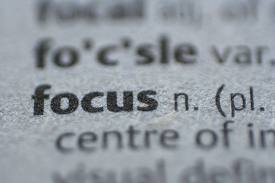04.18.13Engineering Better Practice…for Students
 Julie Kennedy is about as humble and down-to-earth as they come. If you met her, you might not guess that she’s a Managing Director at Uncommon Schools and that next year she’ll supervise and manage a dozen of New York City’s highest performing schools. She’d certainly never go out of her way to tell you she’s a big deal with a ton of authority and world-class track record… more likely she’d offer to show you some pictures of her amazingly cute little boy… which, by the way, if she ever does, you should say yes to on account of he really is super-cute.
Julie Kennedy is about as humble and down-to-earth as they come. If you met her, you might not guess that she’s a Managing Director at Uncommon Schools and that next year she’ll supervise and manage a dozen of New York City’s highest performing schools. She’d certainly never go out of her way to tell you she’s a big deal with a ton of authority and world-class track record… more likely she’d offer to show you some pictures of her amazingly cute little boy… which, by the way, if she ever does, you should say yes to on account of he really is super-cute.
Anyway, I love that about Julie. She wins through wisdom and insight and sheer force of her humanity so people love working for her. I was reminded of that last week when I saw some training materials on the idea of student practice that she’d prepared for her schools. Her goal for her schools this year is, as she put it recently, “to perfect our independent practice for students” on the assumption that lots of great practice drives success. I was really impressed by what she described and by the results I’ve seen in her schools so I asked her to describe her approach to practice in a post…. here’s what she sent:
*****
Last summer, a group of our instructional leaders from across Brooklyn were engaging in a fun thought experiment asking ourselves, “If we could wave a magic wand and make one tiny, sweeping change across all of our 200+ classrooms in our 10 middle schools and high schools, what change would we make?” After throwing around fifteen or twenty different ideas, we landed on “perfecting our independent practice.” This didn’t mean practicing until our students are perfect, but rather designing and executing perfect practice for students. We wanted to perfect the ways we have students practice and internalize the skills and content they’re learning each day. We realized that independent practice is really where our mission of preparing every student for success in college comes to life. It’s the moment when we, as teachers, stop talking and stop doing the work and allow students to test out their own understanding, to make mistakes and to ultimately understand more deeply by learning from those mistakes. Knowing that ultimately our students need to take everything we’re doing, synthesize it, and implement it on their own in their homework assignments, their college applications and their first college classes, we wanted to strengthen the ways we’re serving our kids by perfecting the practice they’re getting in our schools.
To do this, we researched effective practice and observed our teachers running independent practice to distill some ideas around how to perfect our independent practice. Below is what we found:
 1) Independent practice is happening. Daily. How often have you ended a lesson and said, “I got through the lesson but didn’t have enough time for independent practice?” That’s something I said all the time as a teacher. Our group of instructional leaders and teachers started by putting a stake in the ground and saying that our lessons are not “complete” if students aren’t practicing. Across our 6 academic periods, we aim for two hours of independent practice each day. The goal is to move towards the 10,000 hours of practice that Malcolm Gladwell found is necessary to build “champions.” To do this, each of our departments sets goals for the number of minutes of independent practice they’ll hit in each day’s lesson and tracks their progress in meeting that goal. Additionally, some teachers are finding success using timers during the first portion of the lesson to ensure they leave sufficient time for IP!
1) Independent practice is happening. Daily. How often have you ended a lesson and said, “I got through the lesson but didn’t have enough time for independent practice?” That’s something I said all the time as a teacher. Our group of instructional leaders and teachers started by putting a stake in the ground and saying that our lessons are not “complete” if students aren’t practicing. Across our 6 academic periods, we aim for two hours of independent practice each day. The goal is to move towards the 10,000 hours of practice that Malcolm Gladwell found is necessary to build “champions.” To do this, each of our departments sets goals for the number of minutes of independent practice they’ll hit in each day’s lesson and tracks their progress in meeting that goal. Additionally, some teachers are finding success using timers during the first portion of the lesson to ensure they leave sufficient time for IP!
 2) Independent practice is well designed. Anyone who has gone for a ride in a NYC taxi cab knows that time behind the wheel does not necessarily equate to being an expert driver. Some practice simply equals increased experience and some practice is purposeful and sets you up to improve. The second kind of practice is often referred to as “deliberate practice.” Recently, some of our middle school math teachers explored a new design for independent practice called “independent product.” Brooklyn East Collegiate principal Eric Green led us to re-think the structure of this time to build more consistent deliberate practice with a few, shorter, straightforward questions related to the day’s objective in the beginning and then building quickly to a few complex, multi-standard questions that can be discussed following IP time. This formula ensures that the practice is both building skills and purposefully making students grow.
2) Independent practice is well designed. Anyone who has gone for a ride in a NYC taxi cab knows that time behind the wheel does not necessarily equate to being an expert driver. Some practice simply equals increased experience and some practice is purposeful and sets you up to improve. The second kind of practice is often referred to as “deliberate practice.” Recently, some of our middle school math teachers explored a new design for independent practice called “independent product.” Brooklyn East Collegiate principal Eric Green led us to re-think the structure of this time to build more consistent deliberate practice with a few, shorter, straightforward questions related to the day’s objective in the beginning and then building quickly to a few complex, multi-standard questions that can be discussed following IP time. This formula ensures that the practice is both building skills and purposefully making students grow.
 3) Independent practice makes students sweat. Similar to the constant wind that shapes a tree’s growth and makes it stronger, we wanted to provide just the right mixture of challenge and support to shape our students’ growth and make them stronger! There are two avenues to making students sweat– the accountability they feel during this practice time and the rigor of the work they’re digging into. The quickest way to achieve the first is to circulate to every student during independent practice and see every student’s written work. Another easy way our Brooklyn teachers have done this is through collecting and grading classwork, tracking student classwork completion, placing student work under the document camera during class, creating “extra challenge” work for students to move on to in the event that they finish IP and by creatively reviewing IP at the end of the period.
3) Independent practice makes students sweat. Similar to the constant wind that shapes a tree’s growth and makes it stronger, we wanted to provide just the right mixture of challenge and support to shape our students’ growth and make them stronger! There are two avenues to making students sweat– the accountability they feel during this practice time and the rigor of the work they’re digging into. The quickest way to achieve the first is to circulate to every student during independent practice and see every student’s written work. Another easy way our Brooklyn teachers have done this is through collecting and grading classwork, tracking student classwork completion, placing student work under the document camera during class, creating “extra challenge” work for students to move on to in the event that they finish IP and by creatively reviewing IP at the end of the period.
 4) Independent practice includes feedback. In the book Moonwalking with Einstein, Joshua Foer describes people arriving at an “OK plateau.” When individuals get to this point, although they may be continuing to do work or even get practice, they’re not necessarily getting better. To get off the “OK plateau” and move to an “awesome mountain” (this is our phrase, not his) one needs consistent feedback. This is true for our students as they practice independently. To move them from the “OK plateau” we work to ensure we’re circulating during IP and not just checking for completion and focus but checking for quality and accuracy. Some teachers do this through checking/targeting one specific problem each day, others do it through conferencing with small groups throughout the period and giving feedback, and some teachers do this using technology like einstruction’s CPS student response system (clickers) that give immediate and specific feedback.
4) Independent practice includes feedback. In the book Moonwalking with Einstein, Joshua Foer describes people arriving at an “OK plateau.” When individuals get to this point, although they may be continuing to do work or even get practice, they’re not necessarily getting better. To get off the “OK plateau” and move to an “awesome mountain” (this is our phrase, not his) one needs consistent feedback. This is true for our students as they practice independently. To move them from the “OK plateau” we work to ensure we’re circulating during IP and not just checking for completion and focus but checking for quality and accuracy. Some teachers do this through checking/targeting one specific problem each day, others do it through conferencing with small groups throughout the period and giving feedback, and some teachers do this using technology like einstruction’s CPS student response system (clickers) that give immediate and specific feedback.
 5) While independently practicing, students are focused. The best practice happens in focused environments. Some ways to create this every day: 1) be explicit with students about how class should sound, feel and look during independent practice, 2) at the start of each day’s IP, provide a quick slide that reinforces expectations for students before they start working, 3) as you give feedback on student work, provide quiet, precise praise to students exhibiting the focus and habits you want to see and 4) as you transition to IP, before you begin circulating, monitor the class from a strategic position for the first 2-3 minutes until everyone has begun to work.
5) While independently practicing, students are focused. The best practice happens in focused environments. Some ways to create this every day: 1) be explicit with students about how class should sound, feel and look during independent practice, 2) at the start of each day’s IP, provide a quick slide that reinforces expectations for students before they start working, 3) as you give feedback on student work, provide quiet, precise praise to students exhibiting the focus and habits you want to see and 4) as you transition to IP, before you begin circulating, monitor the class from a strategic position for the first 2-3 minutes until everyone has begun to work.
6. Independent practice is reviewed strategically. This is the next challenge. Now that we’re doing Independent Practice every day, how do we ensure thoughtful and strategic wrap up? In lieu of simply reviewing answers or skipping a wrap up entirely, approach the review like eating a box of chocolates with one of those maps in the lid of the box. The map in the lid should make the chocolate-tasting more strategic: you can zero in exactly on your favorite flavor rather than hunting around aimlessly. Use your lesson plan and circulating during IP to build your “map,” record common errors or common strengths, and use that map to lead a strategic review. Model the common error for the class to discuss the misunderstanding, pull an awesome example up on the document camera and ask a couple of strategic questions that draw out the specific strengths of the work or simply highlight a shared strength between everyone in the class. This serves to tie the practice together and also shows students you are paying attention to their practice.
As we dig into the final months of the year, we’re thrilled for the chance to unlock even more strategies for perfecting independent practice and so thankful for our incredible teachers who bring this to life every day.
******
Great post from Julie. Can’t wait to hear your thoughts. By the way for a bit more about Julie read-on:
Julie Kennedy is the Managing Director for the New York City Middle and High Schools at Uncommon Schools, a non-profit network of 32 public charter schools. Julie started her career in education over a decade ago as a science teacher at North Star Academy and later at Boston Collegiate. In 2005, she founded Uncommon School, Williamsburg Collegiate, where she served as principal for 6 years. Prior to her current role as Managing Director, she served as the Associate Managing Director for New York City Elementary schools at Uncommon Schools. Julie earned a Bachelor of Arts Degree in Chemistry from Willamette University in Oregon. She also has a Masters of Public Policy Degree from John F. Kennedy School of Government at Harvard University.
Please click here to learn more about Uncommon Schools.

Two questions, which I tried to pose as simply as possible because I learn the
most when I act like I know the least (which also comes very naturally):
1) How does homework relate to independent practice?
2) Would you swap all homework for one hour of supervised independent practice after school? (Assume that you are in Magic World where such things are possible.)